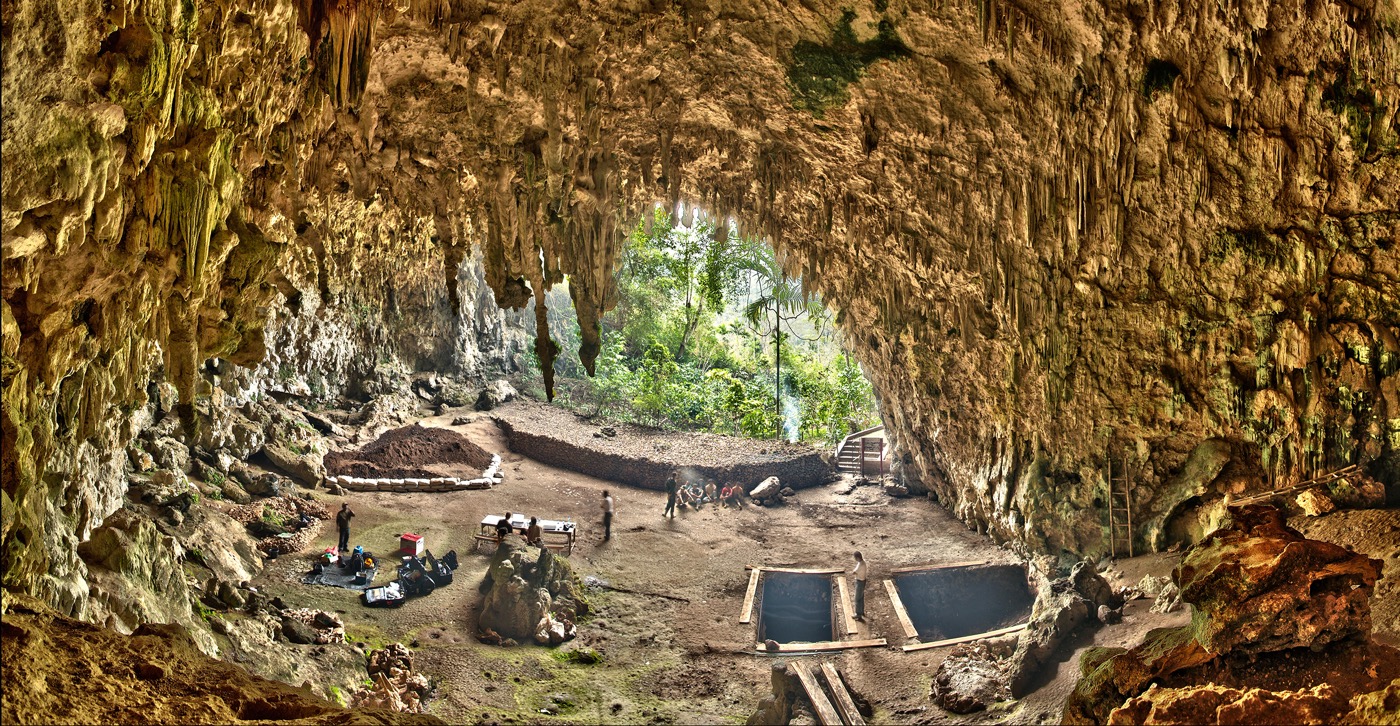Did Hobbits Live Alongside Modern Humans?

The extinct human lineage nicknamed "the hobbit" for its miniature body may have vanished soon before or soon after modern humans arrived on the hobbits' island home, rather than living alongside modern humans for thousands of years as was previously thought, researchers say.
By using new techniques to date hobbit skeletons and the sediment where they were buried, researchers determined that the "hobbit" species, Homo floresiensis, likely vanished earlier than prior estimates had suggested. Even so, the scientists aren't sure whether modern humans had anything to do with the extinction of the hobbits.
"Homo floresiensis reminds us that human diversity was far greater in the past than it is today," said study co-lead author Matthew Tocheri, a paleoanthropologist at Lakehead University in Ontario. "There were lots of different kinds of hominin species, and some of them shared this planet at the same time as us. But all of these other hominins have gone extinct, and we modern humans are the only ones left. We need to better understand why they went extinct and we survived in order to make better decisions as a species for how we take care of our planet and each other for the future." [See Images of Hobbit Skeleton and the New Excavations]
Dating hobbit fossils
The first hobbit fossils were found in 2003 in Liang Bua cave on the Indonesian island of Flores. Scientists weren't sure what species the fossils belonged to, but they found that the individuals were equipped with grapefruit-size brains and would have stood just 3 feet (1 meter) tall — hence the "hobbit" moniker. Examination of the fossils suggested that Homo floresiensis belonged to a unique branch of the human lineage.
But a question remained: Did these hobbits live with their bigger-bodied relatives? Prior work suggested that the sediments in which the hobbit fossils were found were about 12,000 to 95,000 years old. The unexpectedly young ages of the fossils suggested that the hobbits may have survived until long after modern humans reached Australia — and likely other nearby Indonesian islands — about 50,000 years ago.
"This long period of potential overlap was always a puzzle to us, as extinctions seem to follow hot on the heels of modern humans when they arrive somewhere new," said study co-author Richard "Bert" Roberts, a geochronologist at the University of Wollongong in Australia.
Get the world’s most fascinating discoveries delivered straight to your inbox.
Mixing sediment layers
From 2007 to 2014, Tocheri, Roberts and their colleagues conducted new excavations in Liang Bua cave. They found that hobbits used this cave between 190,000 and 50,000 years ago — not until as recently as about 12,000 years ago, which had been suggested previously.
"There was no lengthy period of overlap between the two species, as far as we can determine," Roberts told Live Science. "In fact, we don't even know if they overlapped at all."
The researchers exposed parts of Liang Bua cave not seen in the original excavations, revealing that layers of sediment in the cave are not deposited evenly.
"Liang Bua is an amazing site, and incredibly complex, too," study co-lead author Thomas Sutikna, an archaeologist at the University of Wollongong in Australia, told Live Science. "Every year we return to excavate, we learn something we didn't know or realize before." [Top 10 Mysteries of the First Humans]
The researchers discovered that the sediment deposits in which the hobbits were found were actually similar in age to ones near the center of Liang Bua cave that the researchers dated as about 74,000 years old. The hobbit deposits were later covered by much younger deposits during the past 20,000 years, making them appear younger than they were.
"Our new excavations and analyses show that the skeletal remains of Homo floresiensis at Liang Bua are between approximately 100,000 and 60,000 years old, while stone artifacts reasonably attributable to this species range from about 190,000 to 50,000 years old," Tocheri said.
Giant storks, pygmy elephants and dragons
The hobbit was not the only species that suddenly disappeared from the Liang Bua deposits about 50,000 years ago. Vultures, giant marabou storks, Komodo dragons and pygmy Stegodon — an extinct relative of elephants — vanished from the area at about the same time as the hobbit. Possible reasons for this mass extinction include not only the arrival of modern humans, but also volcanic eruptions and climatic shifts, Tocheri said. "More research is clearly needed to document what exactly happened," Tocheri said.
Tocheri noted that the pygmy Stegodon was the only large-bodied herbivore known to live on Flores when the hobbit was alive, "and it was clearly a primary food source for Homo floresiensis, vultures, giant marabou storks and Komodo dragons. If something happened to cause the pygmy Stegodon population to crash," he said, "then it more than likely would have had an adverse effect on these other species." (Previous research suggested that these giant carnivorous storks snacked on hobbits.)
It remains an open question whether hobbits and modern humans ever lived alongside each other.
"The earliest known evidence of modern humans on Flores is from about 11,000 years ago and after, but we do know that modern humans were on other islands in the region around this time and had reached Australia by about 50,000 years ago," Roberts said. "At least for Australia, the weight of evidence points to humans playing a decisive role in the extinction of the giant endemic animals — the 'megafauna' — that once roamed the continent."
Roberts added, "So was Homo floresiensis another casualty of the spread of our species? This is certainly a possibility that we take seriously, but solid evidence is needed in order to demonstrate it. One thing we can be certain of — it will definitely be a major focus of further research."
The scientists detailed their findings online March 30 in the journal Nature.
Follow Charles Q. Choi on Twitter @cqchoi. Follow us @livescience, Facebook & Google+. Original article on Live Science.



